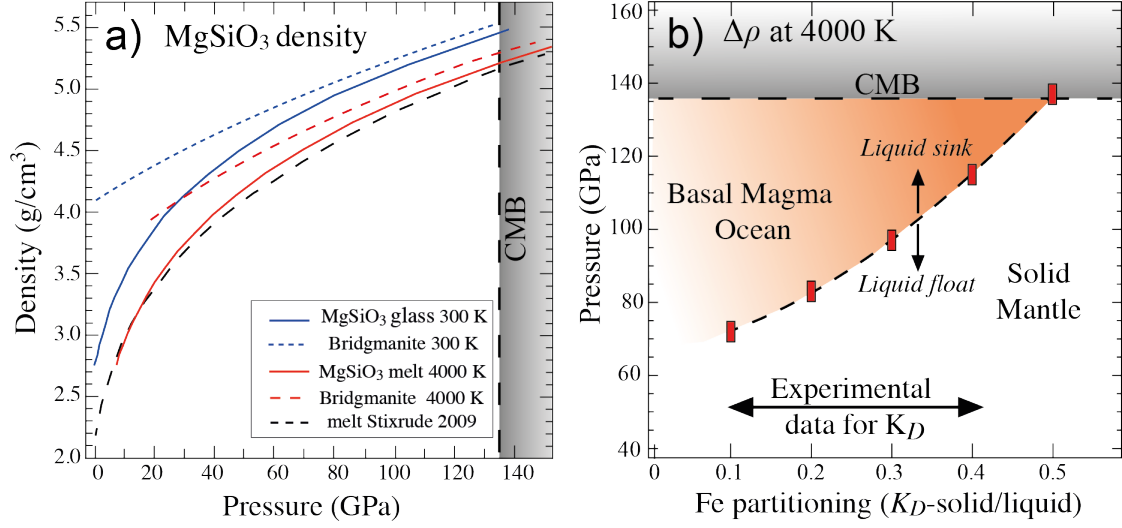
Fate of MgSiO3 melts at core–mantle boundary conditions
Sylvain Petitgirarda, Wim J. Malfait, Ryosuke Sinmyo, Ilya Kupenkoa, Louis Hennet, Dennis Harries, Thomas Dane, Manfred Burghammer, and Dave C. Rubie
Proceedings of the National Academy of Sciences of the United States of America 112(46), 14186-14190 (2015); doi: 10.1073/pnas.1512386112.
4.5 billion years ago, the Earth was partly, or even totally, molten due to large-scale impacts. It has long been thought that the mantle would crystallize from the bottom to the top after such a giant melting event, with crystals being denser than melts and buoyant melts rising to the surface. However, this vision has been challenged over the past decade by recent calculations that indicate large quantities of melt can accumulate on top of the core, yet this remains unconfirmed by experiments. In today’s lower mantle, melt pockets are the possible cause of seismic attenuations at the core-mantle boundary (CMB) and could be the remnants of a basal magma ocean (BMO) that dates the Earth.
In order to better constrain the buoyancy of melts in the Earth’s mantle, we measured the density contrast between MgSiO3 solid and glass to the pressure of the CMB. We developed a new technique in collaboration between BGI and the European Synchrotron Radiation Facility (ESRF, Grenoble, France) to measure in situ the density of amorphous material to unprecedented pressures. We discovered that at the pressure of the deep mantle and room temperature, MgSiO3 bridgmanite and MgSiO3 glass have the same density (less than 1 %). This will be also true at 4000 K between the MgSiO3 crystal and the melt (Figure 1a). Because iron has a strong affinity for the melt, magma that are produced in the lower mantle will be denser than solids and will likely accumulate on top of the core, confirming recent calculations (Figure 1b).

Figure 1. a) Equation of state of MgSiO3 glass at 300 K (blue line) and melt at 4000 K (red line), compared to the density of solid Bridgmanite at 300 K (dashed blue line) and 4000 K (dashed red line). b) Calculation of density crossover in the lower mantle in the MgSiO3-FeSiO3 system using the partitioning data for Fe available form experimental work. A basal magma ocean will form on top of the CMB but with different thickness depending on the iron behaviour at high pressure.
A link to the article:
Tel: +49-(0) 921 55 3700 / 3766, Fax: +49-(0) 921 55 3769, E-mail: bayerisches.geoinstitut(at)uni-bayreuth.de